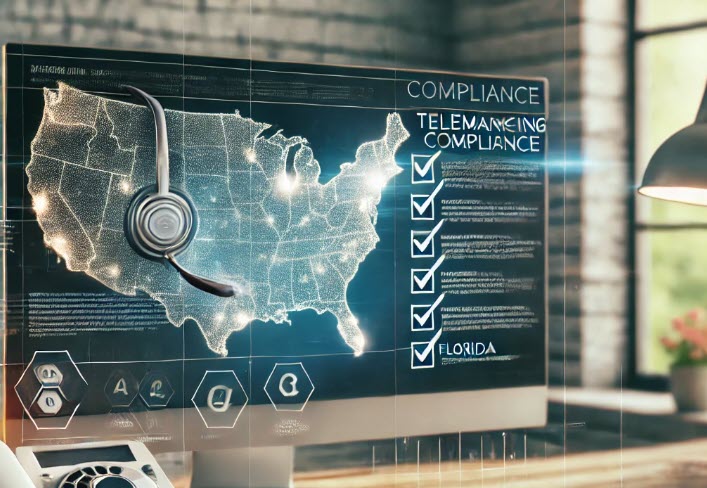
Adapting to Change: Insurance Industry Trends in 2023
Ever wonder how insurance companies are preparing for 2023?
We all know the drill: navigate new regulations, grapple with climate risk, deal with talent shortages – and oh yeah – keep customers happy too! So how do insurers stay afloat in these choppy waters?
In this deep dive into insurance industry trends, we’ll unpack exactly what strategies are being cooked up by the big players. We’re talking about reimagining customer journeys through design thinking and striking that delicate balance between tech advances and good ol’ human interaction.
Embracing Customer Centricity in 2023
The insurance game is changing, folks. The focus is now on the customer.
Let me throw a stat at you: 87.5%.
That’s how many insurers think customer experience is vital for their strategy and new business generation.
The Role of Customer Experience in Business Strategy
In 2023, delivering top-notch customer experience isn’t just nice-to-have—it’s a must-have. It sets you apart from the competition.
A superior client experience can be your secret weapon to keep policyholders loyal and attract more leads.
There’s this thing called “customer-first mentality”. This means prioritizing customers’ needs above everything else.
Forbes explains here why it matters so much now.
It boils down to this—treat clients like royalty if you want them to stick around.
Navigating Challenges in the Insurance Industry
2023 has brought its share of hurdles for insurers.
Talent shortages, climate risks, tech management. You name it.
Talent Shortages in Insurance
The talent gap is widening fast.
We need fresh blood and we need them now.
Studies show 25% of insurance professionals are retiring by 2025. That’s a big void to fill.
Fresh graduates? They’re looking elsewhere – Tech companies, start-ups…
Solutions?
- Ramp up your recruitment game. Start early outreach programs at colleges or trade schools.
- In-house training programs can give newbies that leg-up they need.
- Last but not least: attractive compensation packages never hurt anyone.
Climate Risk and Insurance
No news here: Climate change is real. And it’s hitting our industry hard.
Catastrophes are happening more frequently – hurricanes, wildfires… Our claims departments are working overtime.
This source suggests an alarming trend with increasing severity.
Avenues to explore:
- Underwriting rules should be revisited often based on emerging trends.
- Innovative products covering climate-related losses could help manage these risks.
- Promoting climate change awareness can help policyholders better protect their assets. It’s a win-win.
Leveraging Technology in Insurance
It’s 2023, and tech is the new insurance whisperer.
Balancing Technology and Human Interaction
Tech gives us speed. But it doesn’t mean we lose touch with our human side.
We’re seeing a blend of technology and personal service. It’s about giving clients control but also offering guidance when they need it.
Digital platforms let customers manage policies on their own terms. Chatbots answer questions round-the-clock. AI algorithms streamline claims processes. Despite the automation of many customer service tasks, an agent is still available to provide assistance with more complicated matters or simply lend a listening ear.
The Power of Predictive Analytics
Data isn’t just numbers—it’s future-telling magic if you know how to read it right.
Predictive analytics lets insurers anticipate client needs before even they do. Personalized offerings? Check. Risk management? Double check.
Cybersecurity: A Must-Have Investment
In this digital age, cybersecurity isn’t optional – it’s a must-have investment for every insurer out there. Cyber threats are real, and dealing with them post-factum can cost a pretty penny—both financially and reputation-wise.
So what do we do?
We arm ourselves:
- Encryption is our shield.
- Two-factor authentication, our sword.
- Cyber insurance policies are the knights standing guard at the castle gates.
Tech in insurance isn’t just about efficiency and convenience—it’s also about securing trust with policyholders. And that’s a winning strategy for any insurer out there.
Digital Training: Prepping Agents for the Tech Age
Even with all this tech, we can’t forget about those who make it work—the agents. Agents must stay abreast of digital developments.
Regulatory Requirements in 2023
New regulations? Yep, they’re coming. It’s gonna be a bumpy journey.
We need to stay ahead of these changes. NAIC, our trusty navigator, will guide us through this maze.
Digital Data Regulations
Data privacy isn’t just buzzwords anymore. It’s a top priority in 2023.
GDPR and CCPA? We’ve been there and done that but expect more on the horizon.
Sustainability Standards
Mother Earth needs insurance too. Sustainability standards are hitting the industry hard next year. Be prepared.
SIF’s website tells you everything you need to know about upcoming sustainability regulations.
Economic Scenario Generators (ESGs)
New ESGs (environmental, social and governance) aren’t just another acronym for your collection – They’re changing how we measure risk and profitability.
Get clued up with insights from NAIC’s own ESG resources.
Global Insurance Capital Standard (GICS)
GICS – A game changer for insurers operating globally. So put away your passport and check out IAIS’s comprehensive guide on GICS.
Keeping Up with Regulatory Changes
Do you wish to remain on the cutting edge? You’ll need more than just good intentions.
Dedicated teams, continuous learning, and robust systems – these are non-negotiables in 2023’s regulatory landscape. NAIC is a great resource for staying up-to-date.
Reimagining the Policyholder Journey
Imagine a path that’s all about you, right from start to finish. That’s what we’re aiming for in insurance.
Design Thinking in Insurance
We’re not talking blueprints and drafting tables here. This is design thinking – an innovative approach tailored towards understanding policyholders’ needs and experiences.
This isn’t just talk either; insurers are taking action. Insurance Nexus reports a surge of interest among carriers wanting to adopt this strategy, with 87% acknowledging its value.
In simple terms, it involves stepping into your customers’ shoes. To see their pain points, hopes, fears – everything. You then use these insights to guide the creation or improvement of services or products.
The Customer-Centric Shift
To make design thinking work effectively in insurance requires shifting gears – from company-first to customer-first approaches. But why?
A customer-focused model lets insurers better understand policyholder needs and preferences. Research suggests this can lead to higher satisfaction rates, loyalty levels & profit margins.
Taking on a more empathetic stance helps firms create solutions that actually resonate with users rather than being just another piece of paper (or digital document) they need but don’t appreciate.
Fostering Direct Value Delivery
If done correctly, direct value delivery, should be the result of applying design thinking principles in redefining the policyholder journey.
This means that every interaction a customer has with an insurer is designed to add value and meet their specific needs. It’s not about just selling policies anymore, but about providing comprehensive solutions tailored to individual circumstances. Harvard Business Review points out how this approach can lead to innovation and improved service delivery.
In essence, design thinking in insurance is all about fostering better connections between insurers and policyholders. The result? More satisfied customers who feel valued by their insurer.
Lessons Learned from Past Years
We’ve experienced some unexpected turns of events. So, what have we learned?
Leveraging Past Lessons for Future Success
Lesson 1: The customer is king.
In the past, we focused on products. But now? It’s all about customer experience.
Lesson 2: Embrace technology.
The future is digital. To stay ahead, we need to harness new tech like AI and blockchain in insurance.
Lesson 3: Talent matters.
Finding skilled workers was tough. We learned that nurturing talent internally often yields better results than looking externally.
FAQs in Relation to Insurance Industry Trends 2023
What is the insurance industry prediction for 2023?
Tech innovation, climate risk mitigation, and customer-centric strategies are expected to shape the insurance landscape in 2023.
What are the issues with insurance industry in 2023?
The key challenges could include talent shortages, managing tech-human balance, handling increased regulatory requirements, and addressing climate risks.
What is the future of the insurance industry?
The future points towards a blend of technology-driven solutions with an empathetic human touch while prioritizing customer experience at its core.
What are the insurance business and technology trends in 2023?
We’ll likely see more use of AI/ML for claims processing, blockchain for fraud prevention plus personalized services based on data analytics in insurancescape.
Conclusion
Stepping into 2023, we see how critical customer centricity is in the insurance world. Insurers are prioritizing superior experiences to stand out.
Navigating talent shortages and climate risks forms a part of these challenges. But with insight on future regulatory changes, insurers can brace themselves better for the year ahead.
Tech innovations? They’re vital too! Striking a balance between advanced tech and human touch is key to winning hearts in 2023.
We’ve also seen design thinking come into play. It’s all about putting policyholder needs first – now that’s customer value!
The forecasted “insurance industry trends 2023” indicate change. So let’s take those lessons from past years onboard as we cruise towards an exciting tomorrow!






